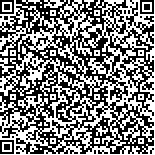下载中心
优秀审稿专家
优秀论文
相关链接
摘要

植被偏振特性研究对于植被监测与组分定量反演具有极其重要的作用。植被冠层的反射辐射具有偏振特性,这种特性与入射辐射和植被冠层结构相关。本文分析了偏振对光子—叶片—冠层之间细微相互作用及其变化的有效探测能力,并利用研究型扫描式偏振辐射仪RSP(Research Scanning Polarimeter)数据系统对比分析了偏振对不同叶倾角分布的估测。通过上述研究得出以下结论:(1)偏振观测能够对光线在冠层立体结构中的透射反射再出射过程给出精细刻画,若不用偏振手段对这一过程进行甄别并去除,则直接测算的植被散射系数会产生高达140%的误差;(2)利用偏振手段可以为高精度大倾角、多时相遥感观测提供可能,以此可改变目前光学遥感小角度、垂直观测的较严格约束;(3)偏振辐射呈现出随波长的稳定特性(相关系数>0.96),使得利用偏振手段可以更好地研究冠层结构;(4)不同叶倾角分布对入射辐射存在不同的偏振反射,为利用多角度偏振信息进行遥感植被精细分类提供了新的途径。本文详细描述冠层结构和植被偏振特性的相互作用,通过对冠层立体结构与叶倾角的研究,刻画了植被定量遥感的方向性信息与高精度实现,为高分辨率遥感定量化的有效信息挖掘提供了新手段。
Studying the polarization characteristics of vegetation is important in vegetation monitoring and component quantitative inversion. The reflected radiation from the vegetation canopy possesses a polarization characteristic that is related to the interaction of incident radiation and vegetation canopy and the distribution of leaf inclination angles. This study analyzes the effect of photon-canopy interaction on the polarization characteristics of vegetation and Research Scanning Polarimeter (RSP) utilizes data combined with the Rondeaux and Herman model to study the polarization characteristics of vegetation under different leaf inclination distributions. A systematic comparative analysis is of more significant than a polarization study considering that leaf inclination distribution satisfies spherical distribution.
This study presents the mechanism of photon-canopy interaction and some existing results related to the impact of canopy structure on the polarization characteristics of vegetation. As for the impact of leaf inclination, this study utilizes RSP data collected on September 16, 2005 in Oklahoma, USA, after atmospheric correction and dense vegetation extraction, and then combines the Rondeaux and Herman model for a systematic comparative analysis on wavelength, sun observation geometry, and leaf inclination distribution.
In this study, we analyzed the impact of photon-canopy interaction on canopy structure and leaf inclination distribution on the polarization characteristics of vegetation. We found that the canopy structure is highly related with polarization characteristics, and the removal of the canopy structure makes polarization a major factor that influences vegetation reflection. We analyzed the stability of the polarimetric reflectance of the vegetation in wavelength range[400, 2500], the distribution of specular reflection in different directions, and the influence of different leaf inclinations and canopy structures on polarimetric radiation. Results of these analyses are clearly presented in the figures in this paper.(1) The effects of canopy structure and leaf polarization on the canopy reflectance of vegetation are closely related. Removing the influence of canopy structure is beneficial to the analysis of polarization characteristics and makes the polarization characteristics a dominant factor affecting canopy reflection. Neglecting the polarization property makes the scattering coefficient (obtained by removing canopy structure impact) produce up to 140% error; this part of the error is almost negligible before removing the canopy structure. (2) The polarimetric effect of multiangle and multitemporal remote sensing on the surface cannot be ignored. Multiangle polarization characteristic analysis and error rejection provide many possibilities for remote-sensing observations under low confinement conditions and help expand the space-time scale of earth observation. (3) Polarization characteristics under a given incident observation geometry is not sensitive to wavelength, and the mirror reflection of the canopy for the incident radiation exists in all directions due to the distribution of the blade inclination angle. Polarization reflectance increases with the increase in phase angle, and polarization characteristics are affected by the distribution of the leaf inclination angle, especially at large phase angles, allowing the use of polarization remote sensing to classify species and obtain canopy structural parameters.
In this study, the polarization method is used to represent a high-precision and rich directional information acquisition process in high-resolution quantitative remote sensing and is the further exploration of effective information based on existing remote sensing methods. The effective information contributes to the further description and study of the greenhouse effect and provides a theoretical basis for the basic propositions in high-resolution remote sensing inversion.

